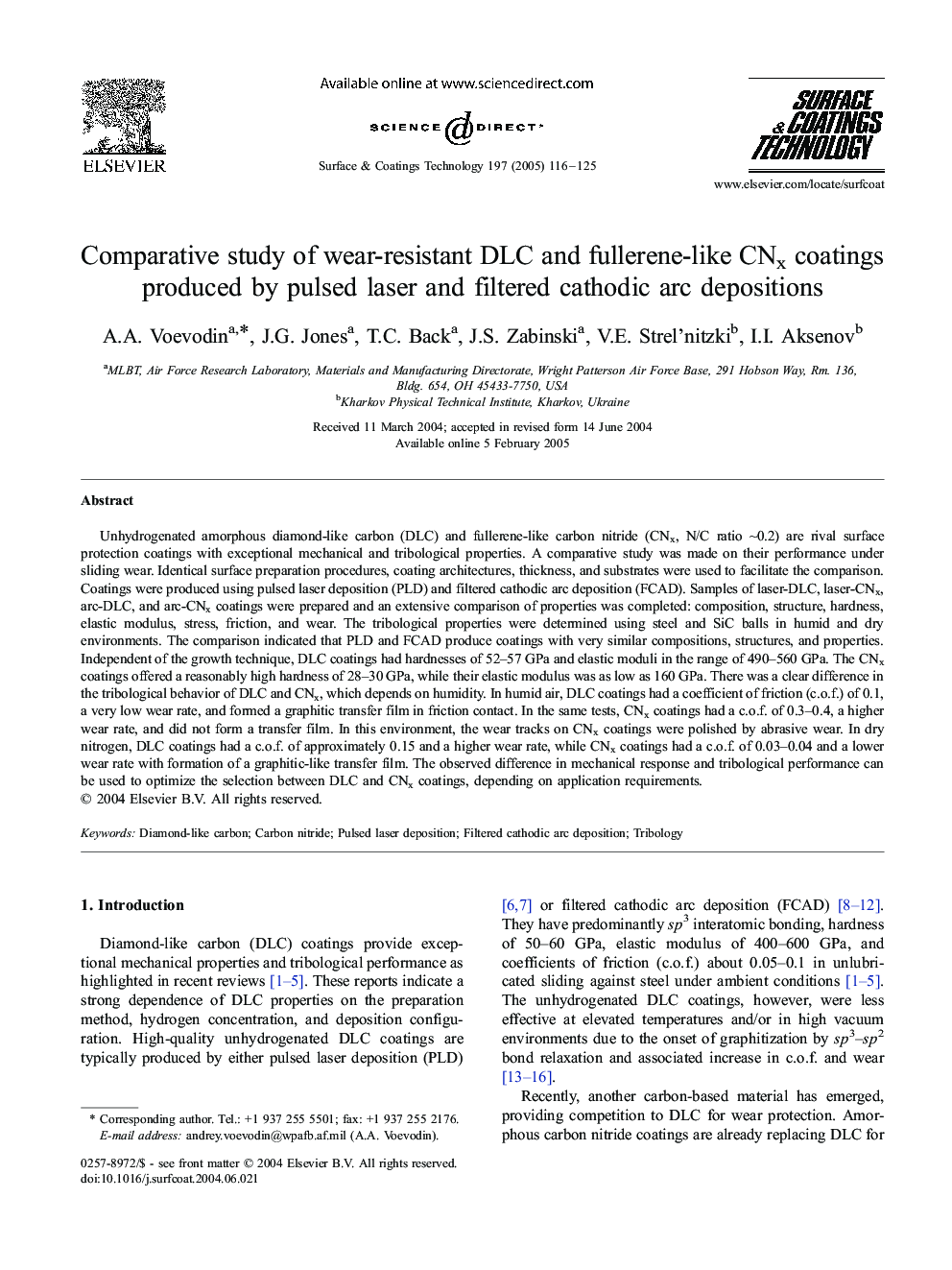| کد مقاله | کد نشریه | سال انتشار | مقاله انگلیسی | نسخه تمام متن |
|---|---|---|---|---|
| 10668895 | 1008482 | 2005 | 10 صفحه PDF | دانلود رایگان |
عنوان انگلیسی مقاله ISI
Comparative study of wear-resistant DLC and fullerene-like CNx coatings produced by pulsed laser and filtered cathodic arc depositions
دانلود مقاله + سفارش ترجمه
دانلود مقاله ISI انگلیسی
رایگان برای ایرانیان
کلمات کلیدی
موضوعات مرتبط
مهندسی و علوم پایه
مهندسی مواد
فناوری نانو (نانو تکنولوژی)
پیش نمایش صفحه اول مقاله

چکیده انگلیسی
Unhydrogenated amorphous diamond-like carbon (DLC) and fullerene-like carbon nitride (CNx, N/C ratio â¼0.2) are rival surface protection coatings with exceptional mechanical and tribological properties. A comparative study was made on their performance under sliding wear. Identical surface preparation procedures, coating architectures, thickness, and substrates were used to facilitate the comparison. Coatings were produced using pulsed laser deposition (PLD) and filtered cathodic arc deposition (FCAD). Samples of laser-DLC, laser-CNx, arc-DLC, and arc-CNx coatings were prepared and an extensive comparison of properties was completed: composition, structure, hardness, elastic modulus, stress, friction, and wear. The tribological properties were determined using steel and SiC balls in humid and dry environments. The comparison indicated that PLD and FCAD produce coatings with very similar compositions, structures, and properties. Independent of the growth technique, DLC coatings had hardnesses of 52-57 GPa and elastic moduli in the range of 490-560 GPa. The CNx coatings offered a reasonably high hardness of 28-30 GPa, while their elastic modulus was as low as 160 GPa. There was a clear difference in the tribological behavior of DLC and CNx, which depends on humidity. In humid air, DLC coatings had a coefficient of friction (c.o.f.) of 0.1, a very low wear rate, and formed a graphitic transfer film in friction contact. In the same tests, CNx coatings had a c.o.f. of 0.3-0.4, a higher wear rate, and did not form a transfer film. In this environment, the wear tracks on CNx coatings were polished by abrasive wear. In dry nitrogen, DLC coatings had a c.o.f. of approximately 0.15 and a higher wear rate, while CNx coatings had a c.o.f. of 0.03-0.04 and a lower wear rate with formation of a graphitic-like transfer film. The observed difference in mechanical response and tribological performance can be used to optimize the selection between DLC and CNx coatings, depending on application requirements.
ناشر
Database: Elsevier - ScienceDirect (ساینس دایرکت)
Journal: Surface and Coatings Technology - Volume 197, Issue 1, 1 July 2005, Pages 116-125
Journal: Surface and Coatings Technology - Volume 197, Issue 1, 1 July 2005, Pages 116-125
نویسندگان
A.A. Voevodin, J.G. Jones, T.C. Back, J.S. Zabinski, V.E. Strel'nitzki, I.I. Aksenov,